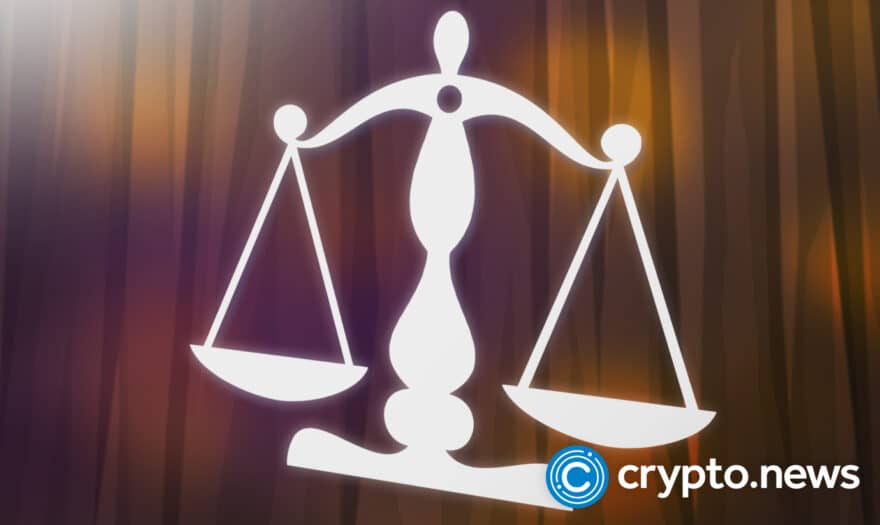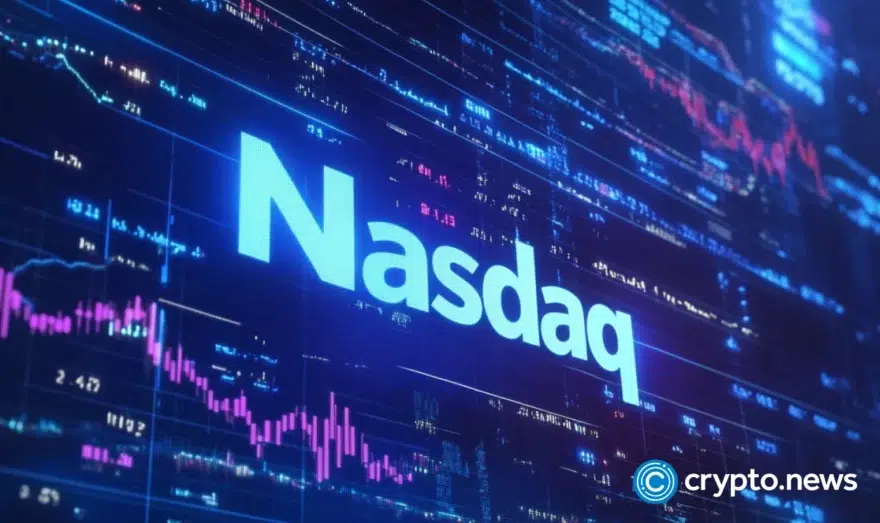Tether at $500 billion would outsize Bank of America — but one depeg can jolt crypto 39x faster

Would Tether’s push toward half a trillion, bigger than Bank of America, survive when one slip shakes crypto 39 times harder?
- Tether is in talks to raise $15–20 billion at a valuation that could near $500 billion, putting it in the tier of the world’s most valuable private firms.
- Alongside fundraising, Tether announced USAT, a U.S. compliant stablecoin issued via Anchorage Digital Bank under the GENIUS Act, while USDT continues to dominate globally with a $173B supply.
- USDT controls about 58% of the stablecoin market, holds nearly $100 billion in U.S. Treasuries, and its market presence is estimated to save the U.S. government $15 billion annually in interest.
- Tether’s growth has long been shadowed by reserve doubts, legal disputes, regulatory fines, and the absence of a full independent audit, fueling scrutiny of its governance and resilience.
- At a half-trillion valuation, Tether would be larger than Bank of America, but research shows one depeg event can amplify crypto volatility 39 times, raising systemic risk concerns.
Table of Contents
Tether reportedly aims for a $500 billion valuation
On Sep. 24, Bloomberg reported that Tether Holdings, the issuer of the Tether (USDT) stablecoin, is in early talks to raise between $15 billion and $20 billion through a private placement. The sale would represent about 3% of the company’s equity.
At those terms, the deal would imply a valuation near $500 billion, putting Tether in the same tier as global private giants such as OpenAI and Elon Musk’s SpaceX. Cantor Fitzgerald has been named as lead adviser on the discussions.
Alongside the fundraising, Tether is laying groundwork for a deeper U.S. presence. In September, the company unveiled USAT, a stablecoin designed to meet American regulatory standards and aimed specifically at U.S. residents.
To lead the initiative, Tether hired Bo Hines, a former White House digital assets adviser, and partnered with Anchorage Digital Bank to issue USAT under federal oversight.
The token’s reserves are expected to follow requirements set out in the GENIUS Act, which recently established federal rules for stablecoin issuers.
Meanwhile, Tether’s core product continues to grow. The circulating supply of USDT is estimated at $173 billion, making it the largest stablecoin by far.
Taken together, the fundraising ambitions, a U.S. compliant coin, and Tether’s entrenched global dominance raises a larger question: what happens if a private stablecoin issuer is valued at half a trillion dollars?
USDT as a digital stand-in for the dollar
Tether’s USDT has become more than the largest stablecoin in circulation. It now acts as a substitute for the dollar across trading platforms, remittance flows, and cross-border payments.
Market share figures underline that reach. In September 2025, USDT controlled about 58% of the stablecoin sector, while Circle’s USD Coin (USDC) held 21.8%. Other tokens remain far smaller, with little influence beyond niche markets.

Tether’s presence now extends into U.S. government debt. A recent study reported that the company held about $98.5 billion in Treasury bills during the first quarter of 2025, equal to roughly 1.6% of the total outstanding.
The researchers found that a 1% rise in Tether’s share was associated with nearly a four-basis-point decline in one-month Treasury yields. That effect became stronger once its holdings crossed certain thresholds, with the estimated impact rising to more than six basis points.
According to the authors, this kind of yield compression could translate into as much as $15 billion in annual interest savings for the U.S. government.
Use in everyday economies has grown at the same pace. In markets with unstable currencies, USDT functions as a parallel store of value and medium of exchange.
Remittance surveys in the U.S. showed that 26% of users already choose stablecoins, pointing to faster transfers and cheaper fees than traditional providers that often charge close to 6%.
Transaction volumes highlight the scale. Stablecoin transfers reached $27.6 trillion in 2024, exceeding Visa and Mastercard combined. A large portion of those flows ran through USDT, confirming its central role in settlement activity.
The combination of dominance in crypto, measurable influence on U.S. debt markets, and adoption in daily commerce shows how Tether has moved from a trading tool into a private issuer of digital dollars shaping global finance.
A history of doubts and disputes
Tether’s rise into global finance has never erased doubts about the strength of its foundation. From the start, the company has carried questions about whether its reserves were as solid as claimed and whether its disclosures matched the scale of its influence.
During 2017 and 2018, Tether assured the market that every USDT was backed one-to-one by U.S. dollars. Reporting at the time raised doubts about those claims, and later legal filings revealed internal records showing that reserves did not always fully match the tokens in circulation.
An attempt to address the concerns came in June 2018, when the law firm Freeh, Sporkin & Sullivan released a review of Tether’s accounts. The firm stressed that its work was not an audit, and observers noted that it fell short of the standards expected from a comprehensive examination.
In 2019, the company openly stated that reserves could include commercial paper, loans, and other assets instead of being held entirely in cash. That admission confirmed long-standing suspicions and marked a shift in how Tether described its own backing.
Legal action soon followed. The New York Attorney General alleged in 2019 that Tether and Bitfinex had used $850 million of reserves to cover losses tied to a payment processor. The case pointed to weak documentation and misleading communication.
A settlement reached in 2021 required an $18.5 million payment, stricter reserve reporting, and a withdrawal from New York, though the companies did not admit wrongdoing.
Later that year, the U.S. Commodity Futures Trading Commission fined Tether $41 million after concluding that its reserves often covered less than three-quarters of USDT in circulation between 2016 and 2019. Tether responded by changing its description of reserves to include cash, equivalents, and other assets.
Concerns have also centered on how USDT circulates through illicit finance. Blockchain analytics firms frequently identify the token in laundering and fraud cases.
In 2024, U.S. authorities seized 200,000 USDT linked to suspected criminal activity, and Tether froze those funds on order. Federal prosecutors later examined whether the company had violated sanctions or anti-money laundering rules. Tether denied being under broad investigation but stressed that it cooperates with agencies worldwide.
Meanwhile, transparency remains unresolved. No Big Four firm has ever conducted a full audit of Tether’s balance sheet, leaving counterparties without the clarity expected of institutions holding comparable sums.
Debate continues over whether Tether influences markets directly. A 2020 study by John Griffin and Amin Shams linked the issuance of new USDT to Bitcoin rallies during downturns, raising the possibility of artificial demand. Tether rejected the findings as flawed, yet the argument resurfaces whenever supply expands sharply.
Why half a trillion matters for regulators
A valuation approaching half a trillion dollars would place Tether alongside the most valuable private firms in the world.
That scale, combined with the global use of its liabilities, could push the company into the territory where regulators view it as a potential source of systemic risk.
U.S. authorities already have mechanisms for handling firms that reach such influence. The Financial Stability Oversight Council, created after the 2008 financial crisis, can designate nonbank companies as systemically important under the Dodd-Frank Act.
Guidance updated in 2023 sets out factors such as size, concentration in financial markets, reliance on short-term funding, and global reach. A company issuing liabilities that circulate worldwide would inevitably face scrutiny under that framework.
Other jurisdictions are shaping parallel responses. The Financial Stability Board has outlined recommendations for cross-border stablecoins, calling for stronger standards and greater disclosure.
The G20, working with the International Monetary Fund, has flagged the risk of currency substitution and capital flight in emerging economies.
FSB reports note that foreign stablecoins can become systemically important in local markets even when regulators do not define them as such.
Central banks have added weight to those concerns. In June 2025, the Bank for International Settlements compared large stablecoins to nineteenth-century private banknotes, warning that without central-bank backing they could weaken national monetary systems.
Analysts at JPMorgan project that stablecoin capitalization could expand from the hundreds of billions into the trillions, underscoring the urgency of those warnings.
Scale that cements Tether’s dominance also magnifies the risk of collapse. Stablecoins form the plumbing of digital markets, and Tether is the largest channel in that system. A failure could instantly drain liquidity used for trading, lending, and settlement.
The European Central Bank has cautioned that such an event would erase a large share of market liquidity and damage price discovery across major tokens.
Research on short-lived Tether depegs shows that even brief slips from the $1 peg can trigger outsized effects on crypto markets.
One study found that in the minutes after a depeg, the probability of sharp jumps in the Bitcoin–dollar rate increases by up to 35 times compared with normal conditions.
The likelihood of “cojumps,” where multiple assets move together, can rise as much as 39 times. These effects continue beyond the initial moments of stress, showing how episodes of stablecoin instability can magnify volatility across the market.
The possibility of such spillovers is one reason why Tether’s proposed $500 billion valuation carries implications far beyond crypto.
At that scale, Tether would move into the same category as the world’s largest banks by market capitalization. It would stand just behind JPMorgan Chase and ahead of Bank of America and ICBC, with a market value roughly equal to two Goldman Sachs combined.
That position would invite systemic oversight, requiring audited reserves, capital buffers, and redemption processes able to withstand stress. The test for Tether is whether a company built on speed and limited disclosure can operate as regulated infrastructure.
If it adapts, stablecoins could evolve into core parts of global finance alongside banks and payment networks. If it does not, the valuation may serve less as a milestone and more as a ceiling.














